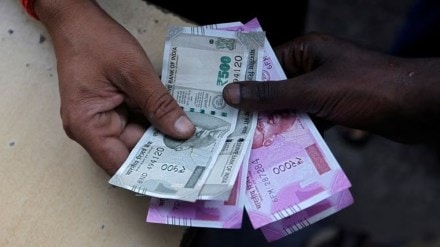India’s economic growth capacity seems to have settled around 6-6.5%, a far cry from over the 8% annual expansion required for it to meet the $35 trillion economy target by 2047, the 100th year of Independence. To become a “developed nation” with per capita income (PCI) above $13,000 by 2047, the PCI must grow at a daunting rate of over 11% a year. To be sure, between the second quarters of FY20 and FY25, the gross domestic product (GDP) grew by an annual average of just 4.87%, and between the first quarters of those years, at an even lower rate of 4.59%. The 8.2% GDP growth reported in FY24 was more a statistical bump caused by the pandemic abyss than being reflective of an economic resurgence. Nothing less than a policy overhaul will suffice for the economy to regain its lost growth capacity and avoid a middle-income trap that looks increasingly real. Domestic levers will have to be predominantly used to create the incremental growth, since the external world only seems grimmer by the day. The question that hangs over the Narendra Modi government as it prepares the Budget FY26 is whether it will veer off the beaten path and undertake the policy shifts needed to spur the economy.
In fact, through his recent comments, chief economic adviser V Anantha Nageswaran has set the stage for the Budget and the overall economic policy restructuring that looks imperative. He lamented how (while the economy is being formalised) a “creeping informalisation” of the workforce (more contract jobs rather than regular ones) exerts a “downward pressure” on consumption. The CEA also noted that Corporate India (despite being the singular beneficiary of the post-pandemic economic churn) is using micro, small, and medium enterprises (MSMEs) as a “source of finance” for it, while it should be the other way around. The economy’s travails are manifested in assorted ways: subdued consumption, reluctant private investments, heavily leveraged households, struggling MSMEs, long-stagnant wages, lack of net gains from foreign trade, and a jobs crisis. The post-pandemic period has also seen a curious trend of ever-rising demand for premium products while the overall consumption demand is rather tepid.
The government will have to revisit the strategy of foregrounding investments and aid job creation in MSMEs with effective policy intervention. It must also arrest the shift to centralisation when it comes to allocation of fiscal resources and policy-making. Apart from statistical reasons, the dip in growth in the first half of the current financial year has also to do with the limitation of employing public investments, just 10-11% of the GDP, as a growth driver for long years. The need for a solid consumption booster is evident from the fact it topped the wish-list of economists as well as industry chambers in their recent pre-budget meetings with the finance minister.
The demand from MSMEs for a waiver from capital gains tax speaks volumes (they are selling assets to cut debt and stay afloat). More public monies must be made available with state governments without riders. Even as the tax-GDP ratio is still a few percentage points lower than where it should be, the undue tax burden on the middle class must be eased, along with concrete steps to boost employment and income. The issue of lopsided credit policies of primary lenders must be resolved, and market powers dispersed. Measures taken in this direction in the last Budget appeared half-hearted; it’s time to go the whole hog.
